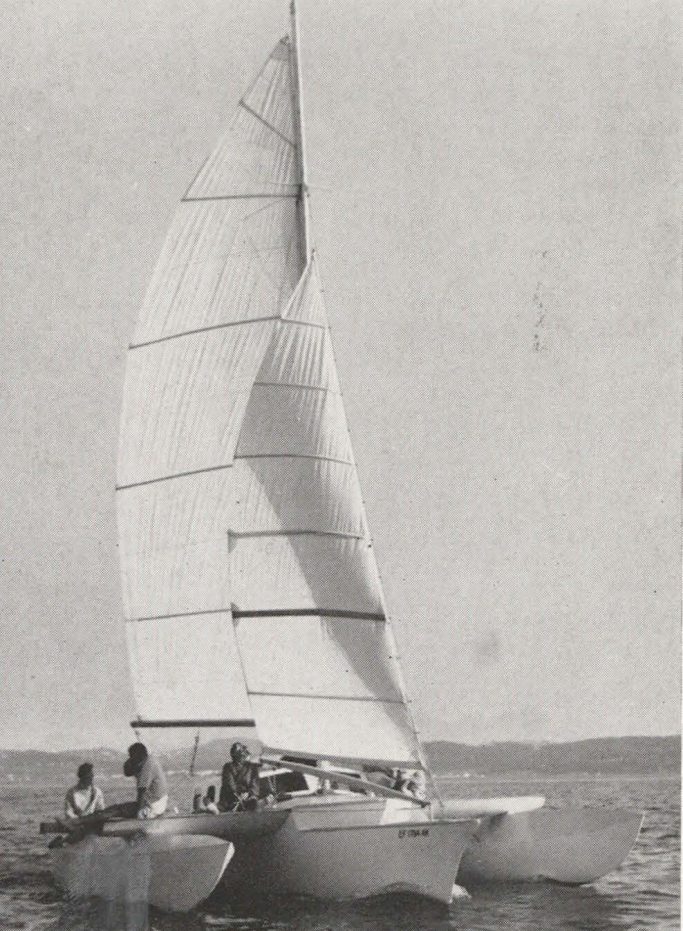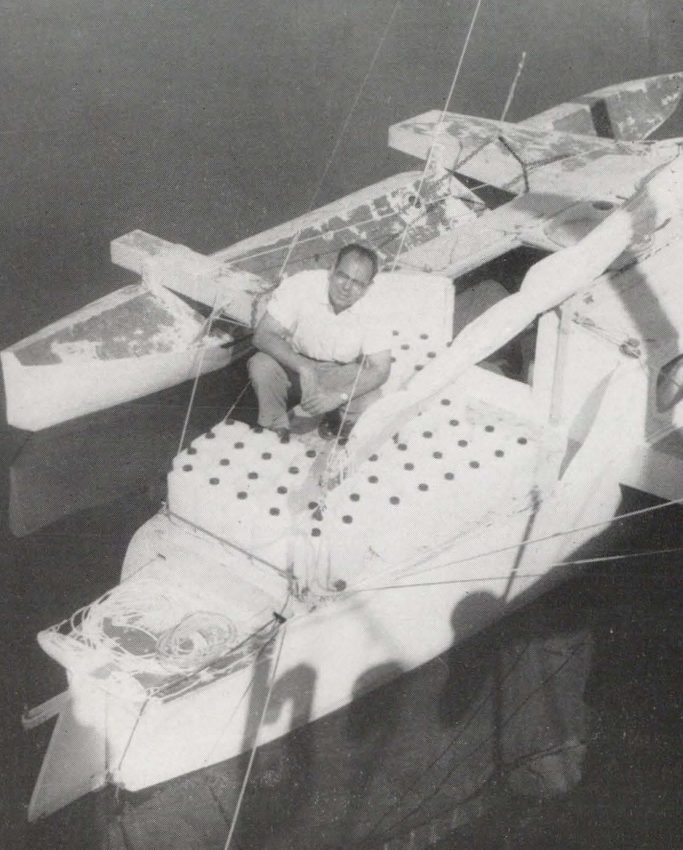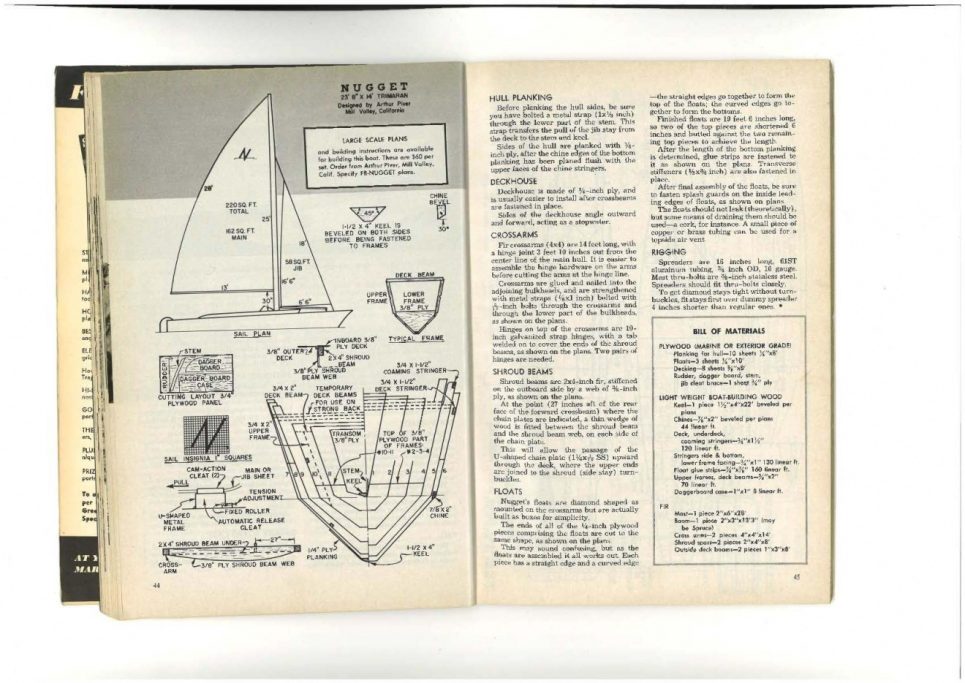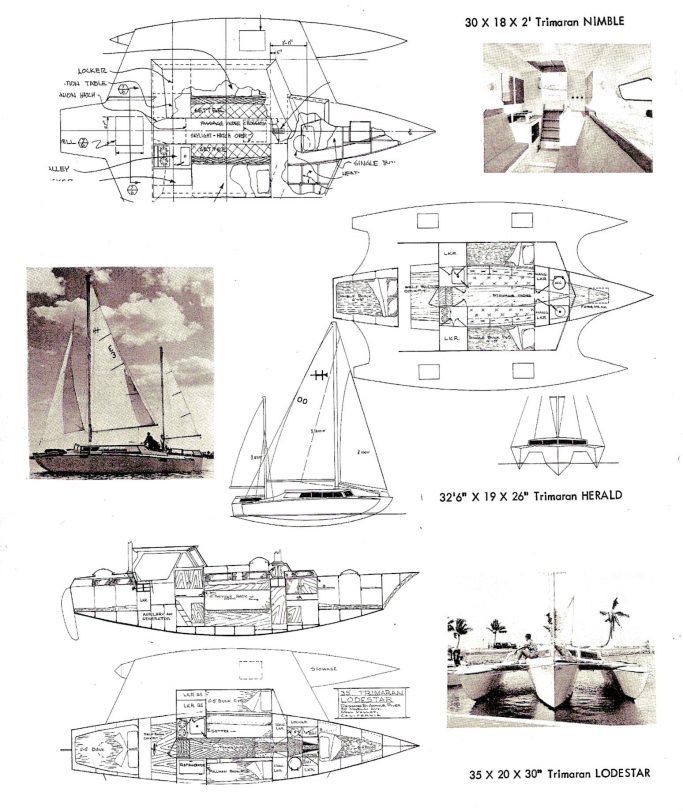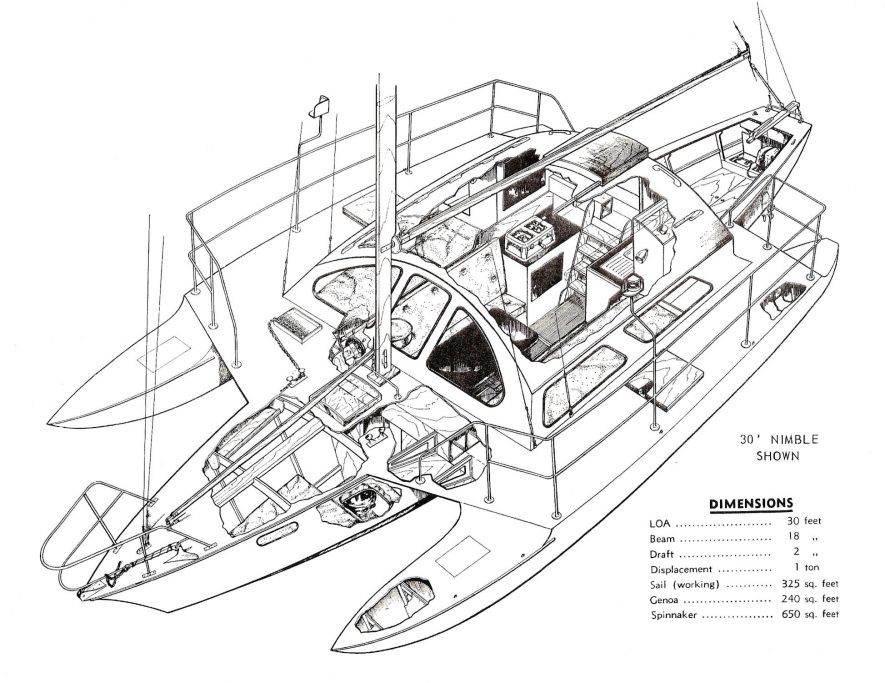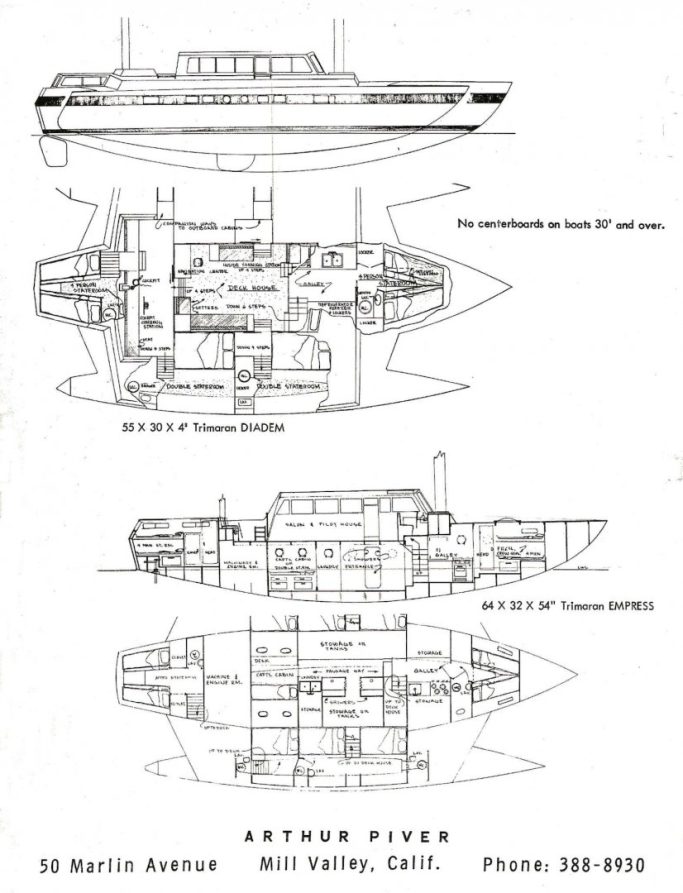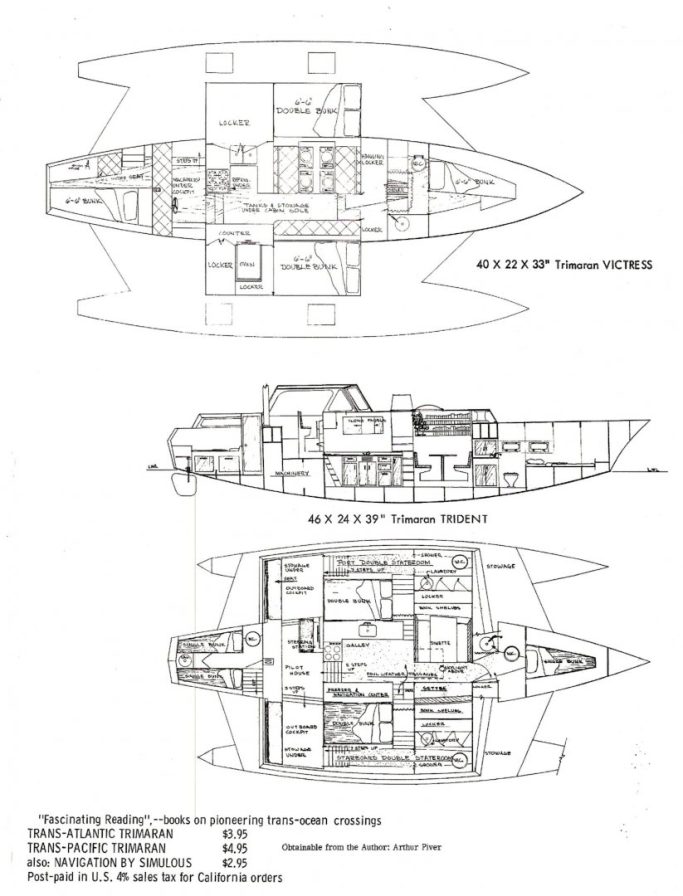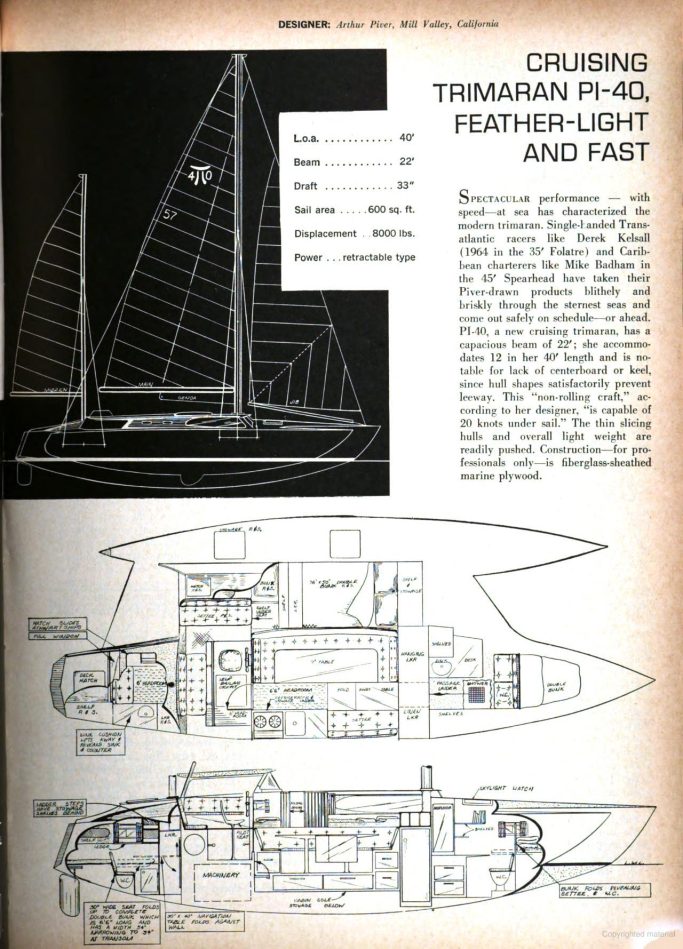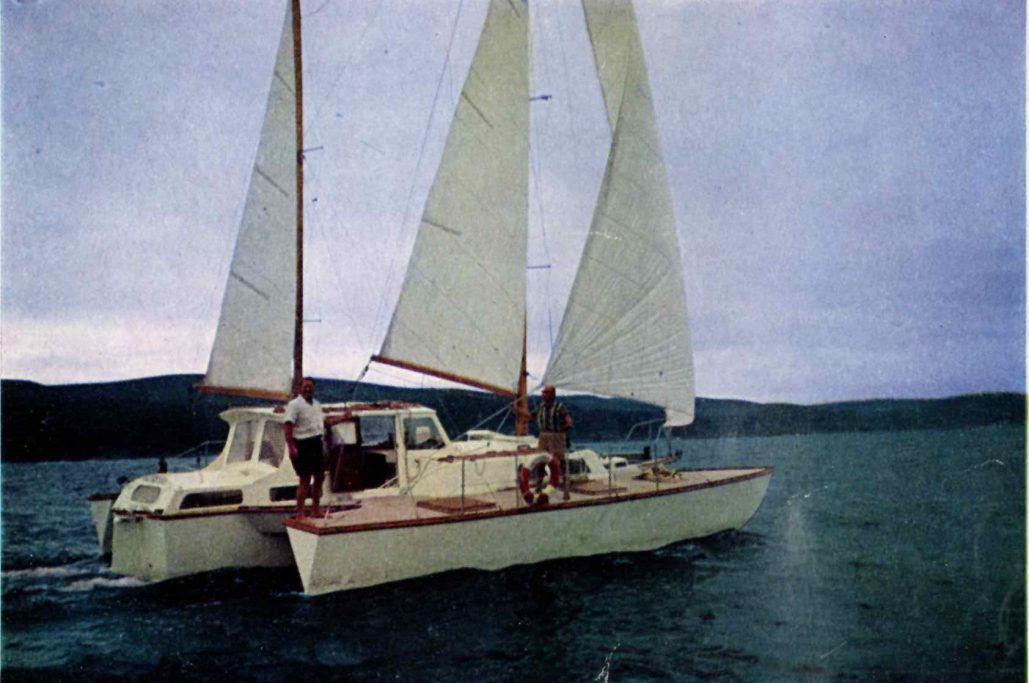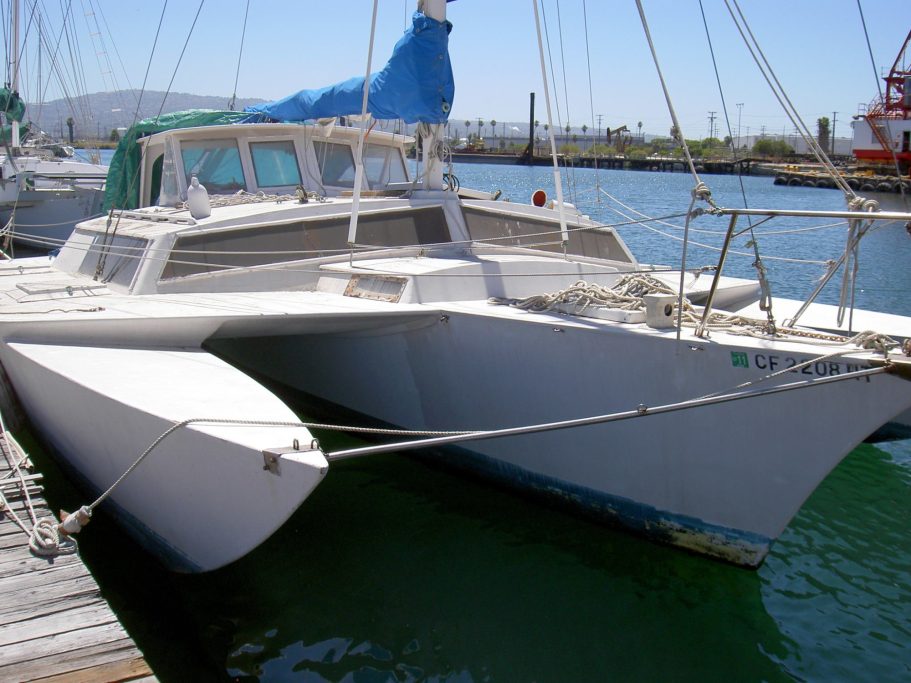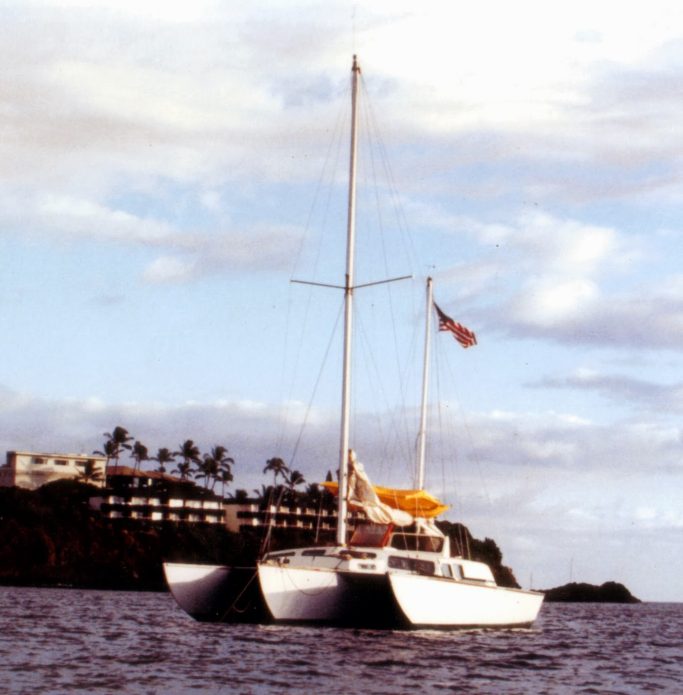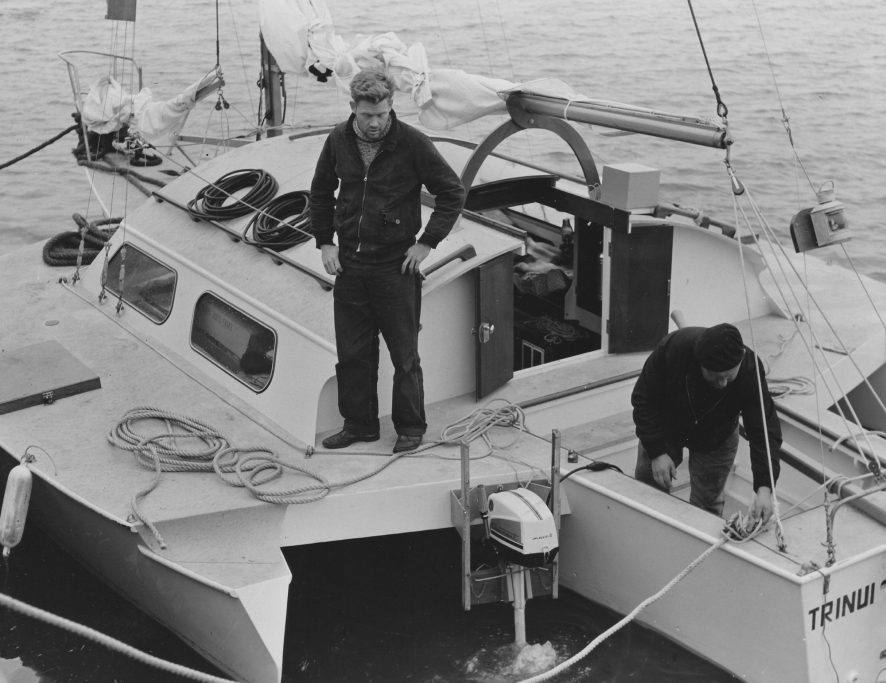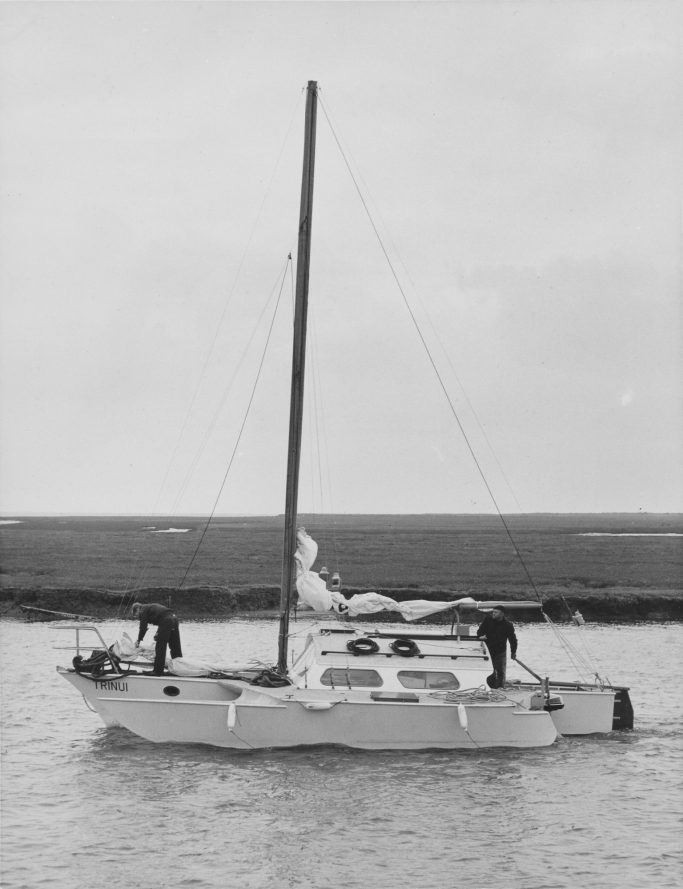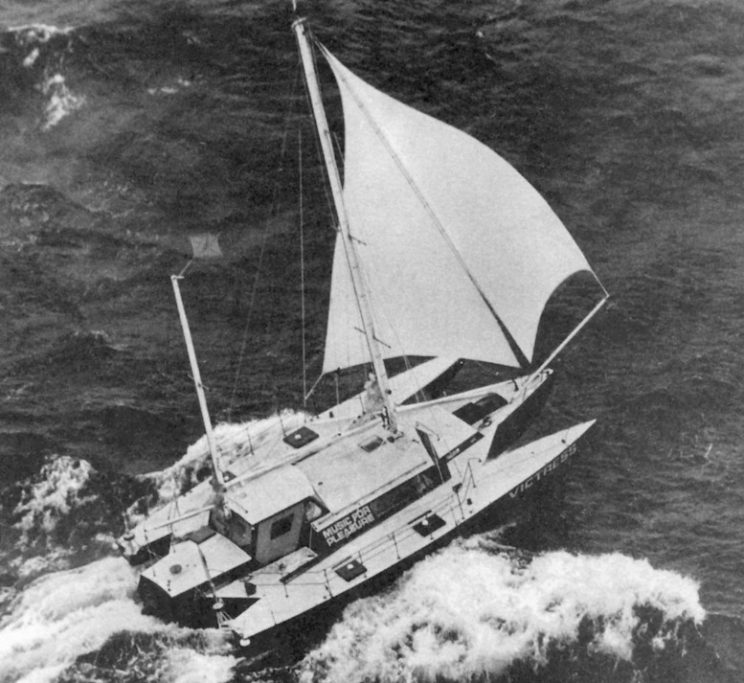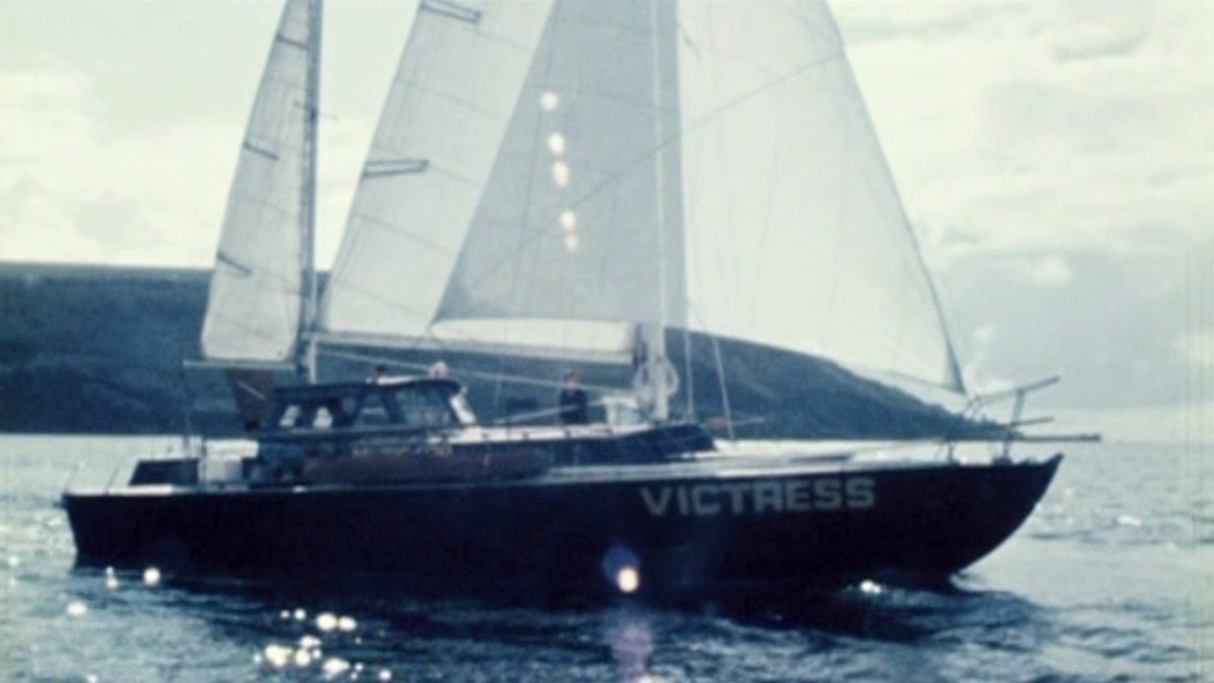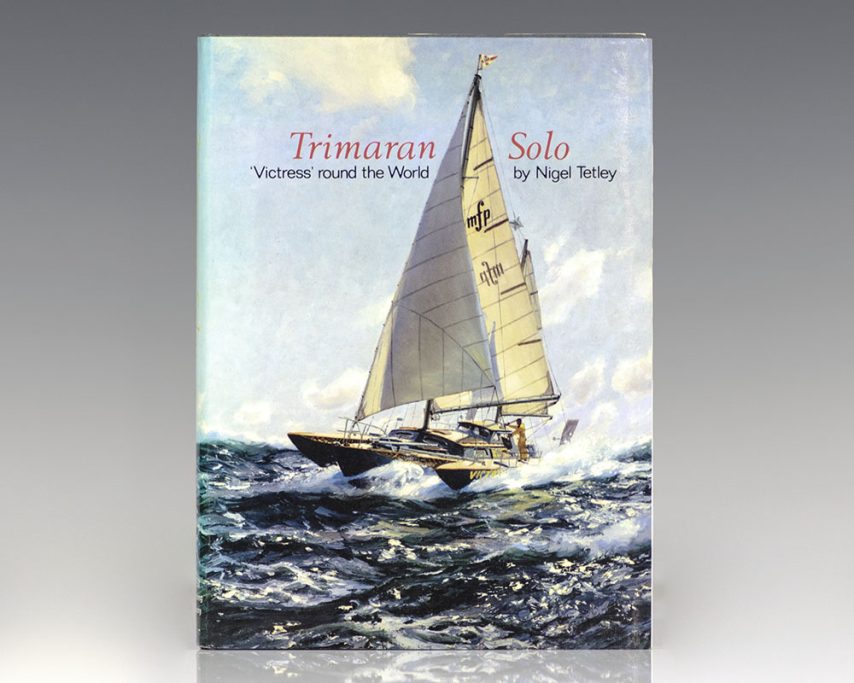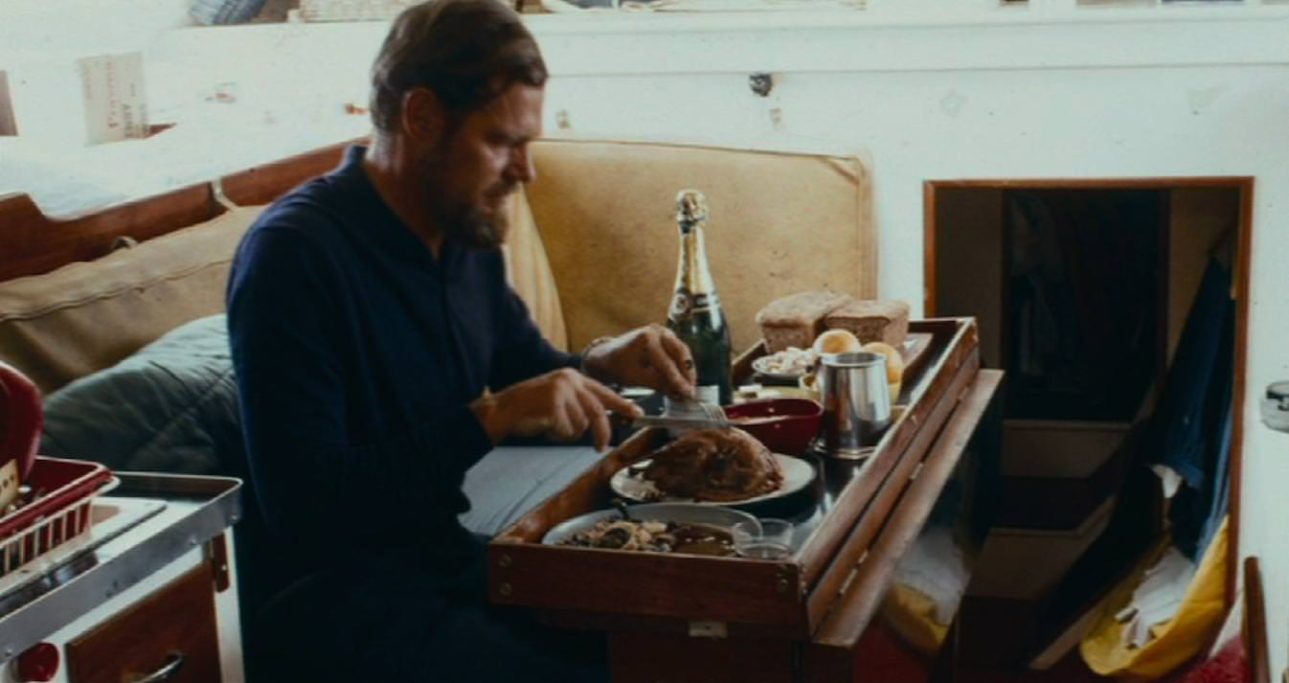Arthur Piver
American Pioneer 1910 to 1968
An almost "evangelical" advocate of trimarans was an American called Arthur Piver. He sailed his trimaran Nimble across the Atlantic in 1960 and in 1962 sailed to New Zealand from San Francisco. Piver had a massive impact and in the 60's and 70's hundreds of his trimarans were built by amateurs and professionals. Born in 1910 Piver was a pilot in WW2 and after the war he owned a printshop and was a keen amateur sailor. In the 50's like many others, he started to experiment with catamarans and trimarans and may have been inspired by the progress of Victor Tchetchet who had tested his trimarans in Long Island in the 1940's. Certainly in 1957 he designed and sailed a 20-foot catamaran-his first design, called the Pi-Cat. in about 1953 Piver had built and sailed a small commercial catamaran called a Lear Cat but decided he could improve on it.
In San Francisco Arthur Piver's experiments led him to start to design easily constructed trimarans for amateur construction. The largest he had produced was a 24-foot trimaran called "Nugget" and the third of these was built by a man called Jim Brown who set off to cruise Mexico in his Nugget. Piver developed this design into a 30-foot demountable trimaran called Nimble built in 1959. Piver and a crew sailed her to the UK in 1960 planning to then race back singlehanded in the first OSTAR promoted in the USA by the Slocum Society. Unfortunately, Piver had to fly home and did not compete in the OSTAR.
In 1962 Piver sailed a 35-footer called Lodestar from San Francisco to New Zealand. He publicised his voyages by writing books and articles and it has to be said made some pretty outrageous claims about the abilities of his boats and their speed. Professionally built in England by Cox Marine the production Nimble 30 - Lodestar 35 and Victress 40 were strong sellers and were bought by often inexperienced sailors that undertook some long voyages across the Atlantic and even on to Australia and New Zealand. Piver's design business was called Pi- Craft and soon there were many examples being built and sailing trans ocean voyages. There were disasters too because many new trimaran sailors did not appreciate that they could capsize. The stiffness under sail particularly with the massively buoyant outrigger floats preferred by Arthur (who condemned the trend towards low buoyancy outriggers taken by many designers) caught them out. Some designs suffered from overloading because of the vast space in three hulls and the large cabin of the Piver and this caused battering under the decks that caused them to break, and the boats also smashed their large windows and were swamped. However, these difficulties caused by the early pioneering nature of the designs and the defects in the plans meant that the buyers and builders were part of the development work and the learning process. It is said that Piver's voyages broadened the public perception of seaworthiness for the trimaran concept and in a very short time. Piver designs became incredibly popular and inspired many novices to believe they could build their own boats and set off for the tropics. Thus, Arthur Piver could be said to be the man most responsible for popularizing the nautical phenomenon of the cruising multihull partly because he inspired many who built or sailed on his designs to develop them. Jim Brown and Derek Kelsall fall into this category. Nobby Clarke the charismatic sales manager at Cox Marine building Piver trimarans in England certainly believed that he improved on Piver's work too and detailed his adventures and the success of the designs in several books. Piver's career came to a premature end in 1968 when he set out in a borrowed Nugget to do a 500-mile solo qualifying voyage for the 1968 OSTAR. His newest design Stiletto was awaiting him in England but he was never seen again and may well have been run down by a ship, but we will never know. Together with Hedley Nicol the Australian designer of the same period he was lost at sea in one of his own designs.
His designs ranged up to a mighty Empress 74-footer to the 24-foot Nugget. Victress was a 40-footer design many of which sailed the Oceans and sailed around the World. A production model named after the class was built in the UK and her owner Nigel Tetley raced her in the 1966 Around Britain Race. He entered her in the 1968 Golden Globe race after failing to obtain sponsorship to build a racer. Victress was home to him and his wife and his two children. He took a photograph of his having Christmas dinner in relative luxury of the trimaran's saloon. Believing he was going to be beaten to the line by Donald Crowhurst in his modified version of Piver’s later 40-foot trimaran. Tetley pushed the overloaded and battered trimaran too hard. The bow of one of the outrigger hulls had already split the plywood skins and broken the inner frames. The bridgedeck between the main hull and the outrigger was disintegrating and eventually broke off flooding the boat and putting a lie to the oft quoted claim of unsinkability Victress was last seen sinking as her skipper hurriedly launched his life raft. Tetley was rescued from his life raft but had crossed his outward track and therefore was really the first man to circumnavigate alone in a multihull rounding three capes including Cape Horn and sailing safely in the Roaring Forties where the pundits said the waves would roll her over and smash her to pieces. It should have been celebrated as a great achievement but was not appreciated because the establishment sensed victory in that the trimaran had broken up rather than win the race. Crowhurst also appeared to have deliberately chosen to end his life rather than admit to his voyage around the World was a fraud. He had sailed around the Atlantic giving false positions by radio and his yacht was found empty. Tetley wrote a book and had Kelsall design and build him a 60-foot trimaran to make another attempt at a non-stop circumnavigation. Apparently struggling financially, he was found hanging from a tree choked by women's underwear. A sad end for an obviously complex man who was nevertheless a fine seaman.



